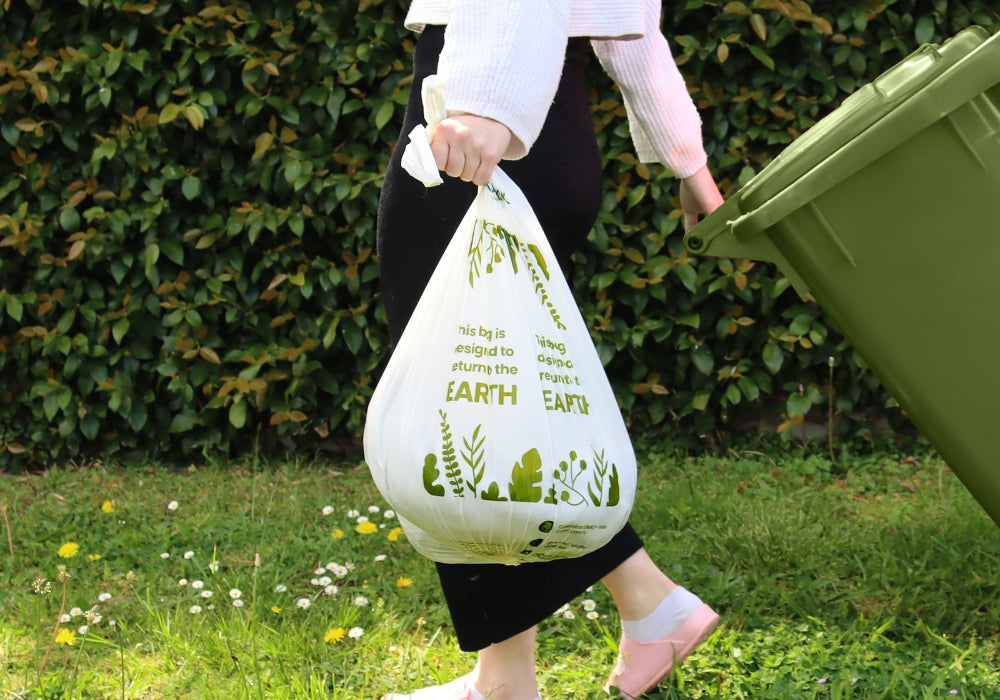
What should I line my compost bin with?
Lining your compost bin helps lock in unwanted odours and can assist composting process. You can line the compost caddy that you use to collect food scraps and/or the composting container itself. Using a liner not only helps maintain the right balance of moisture and aeration, but it also prevents the compost from sticking to the sides of the bin, making it easier to transport and empty. There are several options available for lining your compost bins, each with its own advantages and considerations.
Ecopack Compostable Bin Liner *****
Made from biodegradable materials: GMO-free cornstarch, PLA and PBAT. Unlike many other compostable bags, Ecopack branded compostable bin liners are certified to strict Australasian and International composting certifications to assure they will biodegrade appropriately in both home and commercial compost environments. Use an 8L caddy liner, 18L small bin liner or 27L medium bin liner to collect your household kitchen scraps. 36L liners and 60L liners will be big enough to collect office, cafe or communal food scraps – and there’s even big 140L and 240L wheelie bin liners. Change compostable bin bags regularly to avoid premature biodegradation.
No lining ****
The simplest approach is to not line your compost bin at all. This method allows for maximum airflow and drainage, but the drawback is that it’s a little messy and smelly. For cafes or communal compost collections it would require lugging the whole bin out to empty it in a compost pile or collection. Additionally, without a liner, some compost bins may be prone to rusting or degradation over time.
Newspaper or brown paper ***
Newsprint or brown paper are biodegradable and readily available, and can be used to line compost bins effectively. Simply layering sheets of newspaper or crumpling brown paper and placing it at the bottom and sides of the bin can help prevent sticking while allowing for airflow. However, a load of compost lined in newspaper may be difficult to carry and empty - and will still require frequent replacement.
Cardboard **
Cardboard is another readily available option for lining the bottom of your compost bins. Simply cutting and fitting a piece of cardboard to the bottom of the bin can help prevent compost from sticking while still allowing for adequate airflow. Additionally, cardboard will eventually break down along with the compost, adding carbon to the mix. Be aware that cardboard will not hold up well in wet conditions and will need to be replaced regularly.
Plastic liner *
Using a heavy-duty plastic lining on your backyard compost bin can help prevent compost from sticking to the sides of the bin. Plastic liners also retain moisture well, which can be beneficial in dry climates or during hot weather. However, plastic liners can inhibit airflow, potentially leading to anaerobic conditions and unpleasant odours. Moreover, using plastic liners contradicts the eco-friendly ethos of composting, as they contribute to plastic waste – and it will not break down and join your compost.
When choosing a lining for your compost bin, consider what’s practical and going to assist you in contributing to your compost pile regularly. And make sure you choose a materials or technique that contributes to a nutrient-rich compost while minimizing waste and environmental impact. In our humble opinion, the clear winner is Ecopack compostable bin liners!

